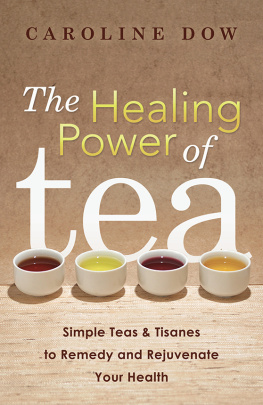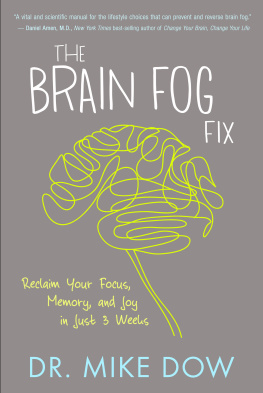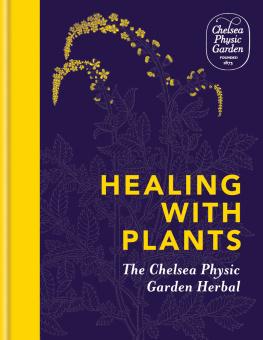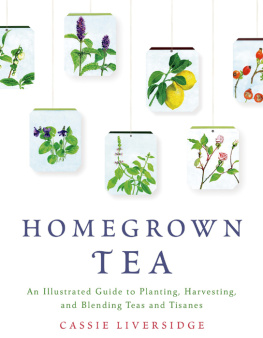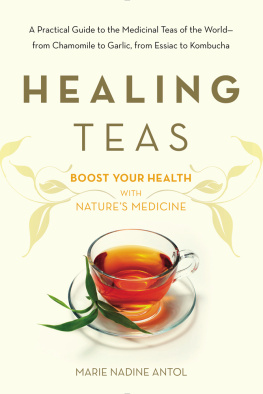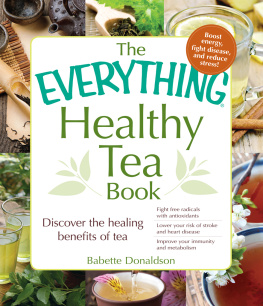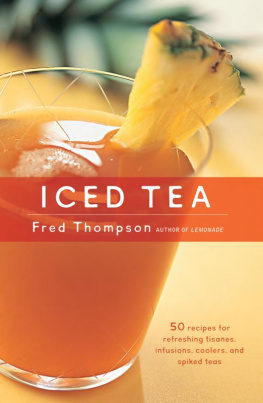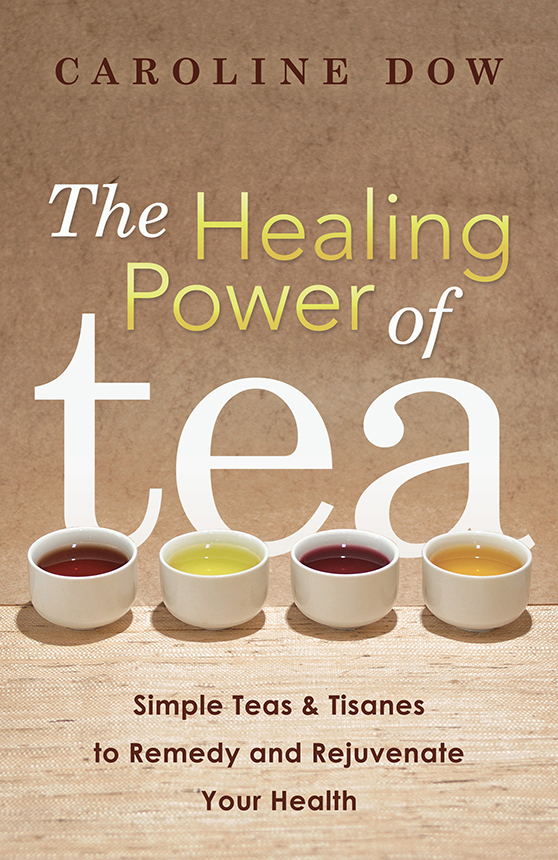Caroline Dow (Boulder, CO) has been a tea leaf reader and aromatherapist for thirty years and conducts popular workshops on tea leaf reading around the US and abroad. Author of sixteen books under various pen names, she also owns and manages an online aromatherapy company. She holds a PhD in Luso- Brazilian Studies and received a Fulbright Dissertation Research Fellowship to Brazil. Her book Magic from Brazil: Recipes, Spells and Rituals (Llewellyn, 2001) chronicles those experiences. Three books she has written for Llewellyn have won national and state awards: Complete Book of the Psychic Arts (2000), Fuego Angelical (2000), and Tea Leaf Reading for Beginners (2011).
Llewellyn Publications
Woodbury, Minnesota
Copyright Information
The Healing Power of Tea: Simple Teas & Tisanes to Remedy and Rejuvenate Your Health 2014 by Caroline Dow.
All rights reserved. No part of this book may be used or reproduced in any matter whatsoever, including Internet usage, without written permission from Llewellyn Publications, except in the form of brief quotations embodied in critical articles and reviews.
As the purchaser of this e-book, you are granted the non-exclusive, non-transferable right to access and read the text of this e-book on screen. The text may not be otherwise reproduced, transmitted, downloaded, or recorded on any other storage device in any form or by any means.
Any unauthorized usage of the text without express written permission of the publisher is a violation of the authors copyright and is illegal and punishable by law.
First e-book edition 2014
E-book ISBN: 9780738741598
Book design by Bob Gaul
Cover design by Ellen Lawson
Cover image by Ellen Lawson
Editing by Laura Graves
Llewellyn Publications is an imprint of Llewellyn Worldwide Ltd.
Llewellyn Publications does not participate in, endorse, or have any authority or responsibility concerning private business arrangements between our authors and the public.
Any Internet references contained in this work are current at publication time, but the publisher cannot guarantee that a specific reference will continue or be maintained. Please refer to the publishers website for links to current author websites.
Llewellyn Publications
Llewellyn Worldwide Ltd.
2143 Wooddale Drive
Woodbury, MN 55125
www.llewellyn.com
Manufactured in the United States of America
Contents
: About Tea
: Black Tea
: Green Tea
: White Tea
: Herbal Teas
: Ailments from A to Z and Teas to Help
: How to Brew Tea
: Where to Find Tea
Acknowledgments
Acknowledgments go to acquisitions editor Amy Glaser and the vision committee, whose many comments and suggestions helped shape this book into its final form.
Introduction
This book is about how tea and herbal infusions can help heal the body. It also details ways to drink tea and herbal teas as a preventative measure. The text focuses specifically on the therapeutic value of tea and herbal teas. Included is updated data about kinds of tea and their health benefits, and descriptions of grades and popular types. Ailments and teas to help alleviate them are highlighted. Information about blending, preparation, consumption, and how to prepare herbal infusions for healthy living is also covered. Gardening tips are offered for those inclined to grow their own herbs for tea making. The appendix includes suggested recipes. A glossary of tea terms as well as reference data for the scientific studies quoted are provided at the end of the book.
The book is a manual for those who wish to learn more about the healing power of tea for healthy living. Unfortunately, neither tea nor herbal teas are a cure-all for any ailmentthey are supplemental drinks to be consumed for better health and enjoyment. They can be ingested when standard medications engender too many side effects. Unlike standard medicine, which is strong and meant to root out disease, teas and other botanical preparations exert gentle effects on the body. They stimulate a persons natural defenses against disease, and thus work best as a preventative or for minor or chronic conditions such as a cold, headache, or indigestion.
Therefore, the information presented is not meant to be a substitute for professional medical care. It is offered as a guide to those who wish to engage in additional alternative treatments. If you are suffering from any ailment whatsoever, it is strongly suggested you see a qualified, licensed medical professional.
One
About Tea
This chapter relates a brief history of tea on how it has been used for healing and healthy living. The chapter goes on to describe what tea is, different grades and types of tea, some health benefits of drinking tea, and current tea trends.
The Sumerians were the first people to supply a record of the medicinal properties of botanicals, which they engraved on clay tablets around 3000 BCE. However, the Chinese were the first to discover the tea botanical. They called this substance The River of Jade because, at first, they drank only unprocessed green leaves. They valued tea so much for its health benefits that they likened this drink to the precious mineral jade. In 780 CE, Cha Ching, The Classic of Tea , was the first book written on the history, medicinal properties, and cultivation of tea. In it, the author states the health benefits the Chinese people believed were derived from tea. These benefits included longevity, cures for headache and nervousness, and the ability to keep a person alert.
In 1191 CE, the founder of Zen Buddhism brought the first tea seeds from China to Japan. This monk planted the seeds at his monastery in Kyoto. As far as healthy living is concerned, both Chinese and Japanese monks mostly drank tea to stay alert during meditation. During the Chinese Ming Dynasty (13681644), modern methods of steeping green, oolong, and black leaves in teapots and cups were developed. Now most people in these countries drink tea for pleasure as well as for healthy living.
Tea was introduced to Europeans by the Dutch in 1610 via a shipment of green tea from Japan. The Dutch touted the drink for its ability to cure headaches, keep a person alert, and to promote longevity, just as the Chinese had done. Catherine of Braganza, the Portuguese queen to Charles II of England, was already drinking tea in Portugal before she married, and she introduced the beverage to the British as a healthy alternative to alcohol. She too believed that tea cured headaches, kept a person alert, and promoted longevity. Eventually tea consumption spread through out the world. Today people drink it because they like the taste and also because they believe in teas ability to cure a variety of ills, including heart disease, digestive problems, headaches, diseases of the immune system, respiratory system, nervous system, and more. These ailments and teas alleged ability to help keep a person alert, promote longevity, and alleviate symptoms of disease are detailed later in this chapter and throughout the book.
There are many drinks, including herbal concoctions, which people generally refer to as tea. People involved in the tea industry maintain that all real teameaning black, oolong, green, yellow, and whitecomes from the same plant, a kind of camellia ( Camellia sinensis and Thea sinensis ). This flowering evergreen grows in the wild as a tree. Growers prune it back to shrub height to make harvesting the leaves easier. The tea bush thrives at high altitudes in humid climates near the equator. It grows best when the leaves are shaded from the searing sun. In fact, one varietal, Gyokuro, is cultivated completely in shade.

